Blue-ringed octopus
Web The blue-ringed octopus diet typically consists of small crustaceans such as crabs and shrimp. Web Blue-ringed octopuses are not aggressive.

Blue Ringed Octopus Schwimmen Stockfotografie Alamy
However very few people have died from a blue-ringed octopus bite.
. Web The blue-ringed octopus has a nasty surprise for any potential prey or predators. No larger than approximately 25 inches long with arms that are about 4 inches long. Web Blue-ringed octopuses produce a potent neurotoxin called tetrodotoxin a potentially-deadly substance also found in pufferfish.
It has known to have caused the deaths of. Web Blue ringed octopuses are some of the most venomous marine creatures in the world. Within its salivary glands live bacteria which produce the chemical tetrodotoxin.
Web Blue-ringed octopi are small in size. Web Blue ringed octopus are one of Australias most venomous poisonous creatures. Web The blue-ringed octopus is a small octopus that ranges in size from 4 mm at birth to up to 20 cm in adulthood.
These rings are reported to glow when an individual is aggravated. They also tend to take advantage of small injured fish if they can catch them. At first glance this tiny octopus looks perfectly innocuous.
The Blue Ring Octopus has distinctive blue rings on its body and on its eight armsIt is only about 8 in. The severity of symptoms depends on how much venom someone receives. The most outstanding characteristic of this species is the iridescent blue rings in the eye spots.
The majority of its diet is composed of small crustaceans such as shrimp and crabs. Despite their apparent gentle nature these small molluscs are known to be one of the most venomous and dangerous sea creatures on the planet. They typically live on coral reefs and rocky areas of the seafloor though some may be.
Its psychedelic coloring and pint-sized packaging make it seem more adorable than alarming. Larger specimens those longer than four inches have been observed to also catch and eat injured fish. Web The term blue-ringed octopus does not merely refer to a single species but a genus of species that are marked by bright blue circular patterns.
This toxin can be fatal. There are at least 10 species of tiny blue-ringed octopuses which ironically for their size are the most deadly of all cephalopods. These little octopuses have been found in the Pacific and Indian oceans.
Web The blue-ringed octopus is a master of ambush using camouflage and a clever ability to hide within empty shells or rock crevices to wait until their prey is within sight then they pounce on their hard-shelled meal trapping it with their arms and using their hard parrot-like beak to make a hole in the shell or exoskeleton. Web The Blue-Ringed Octopus Hapalochlaena are octopus that live in tide pools and coral reefs in the Pacific and Indian Oceans from Japan to Australia. Most of the time theyre yellow or sand-colored but bright blue.
They are recognized as one of the worlds most venomous marine animals despite their. Web The greater blue-ringed octopus Hapalochlaena lunulata is one of four species of extremely venomous blue-ringed octopuses belonging to the family Octopodidae. Web The Blue Ring Octopus Hapalochlaena lunulata is the most venomous octopusThis small mollusk lives in warm shallow reefs off the coast of Australia New Guinea Indonesia and the PhilippinesIt has a life span of about 1 12 years.
They are known for their colorful patterns of bright blue rings and their highly poisonous venom. This particular species of blue-ringed octopus is known as. Web Blue ringed octopus is a small cephalopod of the genus Hapolochlaena which contains four known species.
They are small and tend to inhabit tide pools and intertidal reef habitats. As blue-ringed octopus evolved they partially lost their defensive ability to ink as their ink sac became smaller and smaller. Southern blue-ringed octopuses reproduce through internal fertilization and a female lays benthic eggs that she guards until they hatch sometimes as long as several months.
The venom is produced by symbiotic bacteria in the animals salivary glands and is more toxic than that of any land mammals. The small octopuses are common in tropical and subtropical coral reefs and tide pools of the Pacific and Indian Oceans ranging from southern Japan to Australia. They emerge only to hunt food or look for a mate.
A mild case of envenomation may result in tingling around the mouth and mild weakness. Two well-known examples are the lesser Southern blue-ringed octopuses Hapalochlaena maculosa Hoyle 1883 and the greater blue-ringed octopuses. They are one of.
It is dark brown to dark yellow tan-yellow in coloring. Web The blue-ringed octopus is a very effective hunter. There are several species of blue-ringed octopuses in Australia with the most common one found in Sydney being the Blue-lined Octopus.
Its bite can be fatal to humans. This is a strong fast-acting toxin that paralyses the target by blocking the nerves from transmitting messages. Blue ring octopus are found in rock pools sheltered rocky holes old shells discarded bottles throughout Australia New Zealand Papua New Guinea Indonesia Fiji and Japan.
Their primary habitat is around southern New South Wales South Australia and northern Western Australia. They usually remain in crevices among rocks inside shells and even in discarded bottles and cans. Web A blue-ringed octopus is one of the most dangerous animals in the ocean.
Web All three blue-ringed octopus species in Australia have killed people but cases are extremely rare. Web The Blue-lined Octopus is one of the blue-ringed octopuses which are reputed to be among the most dangerous animals in the sea. They flash blue rings on their bodies when disturbed excited or angry.
These small members of the cephalopod family are also related to other octopus species along with squid cuttlefish and nautilus. The blue-ringed octopus utilizes a style of hunting that is known as the pouncing technique. Web Blue-ringed Octopuses MarineBio Conservation Society.
The blue-ringed octopus pounces on its prey seizing it with its. Web The blue-ringed octopus is an extremely venomous animal known for the bright iridescent blue rings it displays when threatened. Web Southern blue-ringed octopuses are only a threat to humans when they feel threatened and directly bite someone.
Web Blue-ringed octopuses are a group of highly venomous cephalopods. Web The blue ringed octopus is one of the oceans most interesting creatures. You can easily recognize these small octopuses because of the bright blue rings covering their bodies.
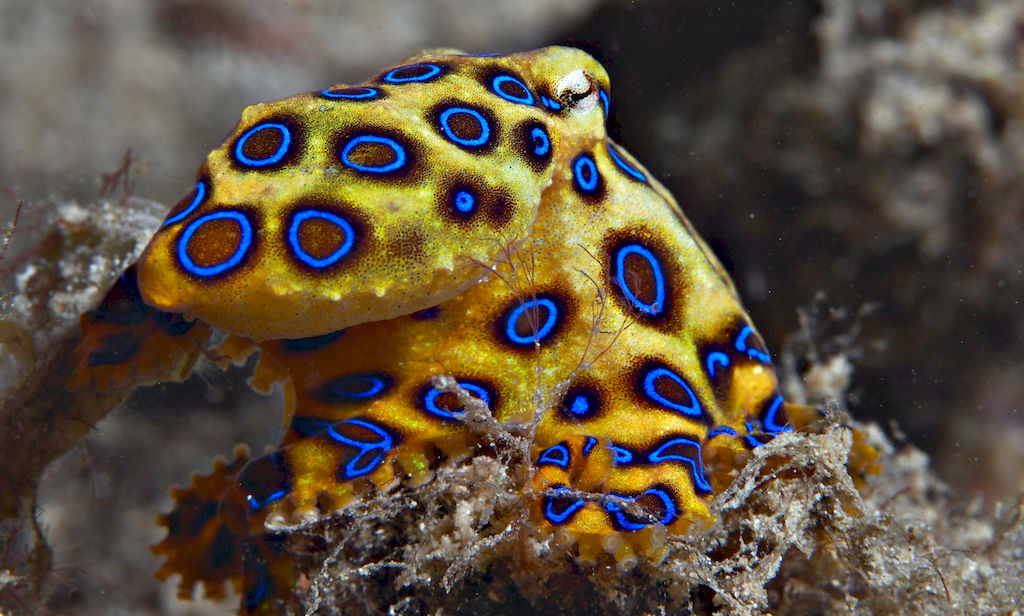
Blue Ringed Octopus The Most Deadliest Octopus

What Do Blue Ringed Octopus Eat Blue Ringed Octopus Facts

Blue Ringed Octopus Wikipedia
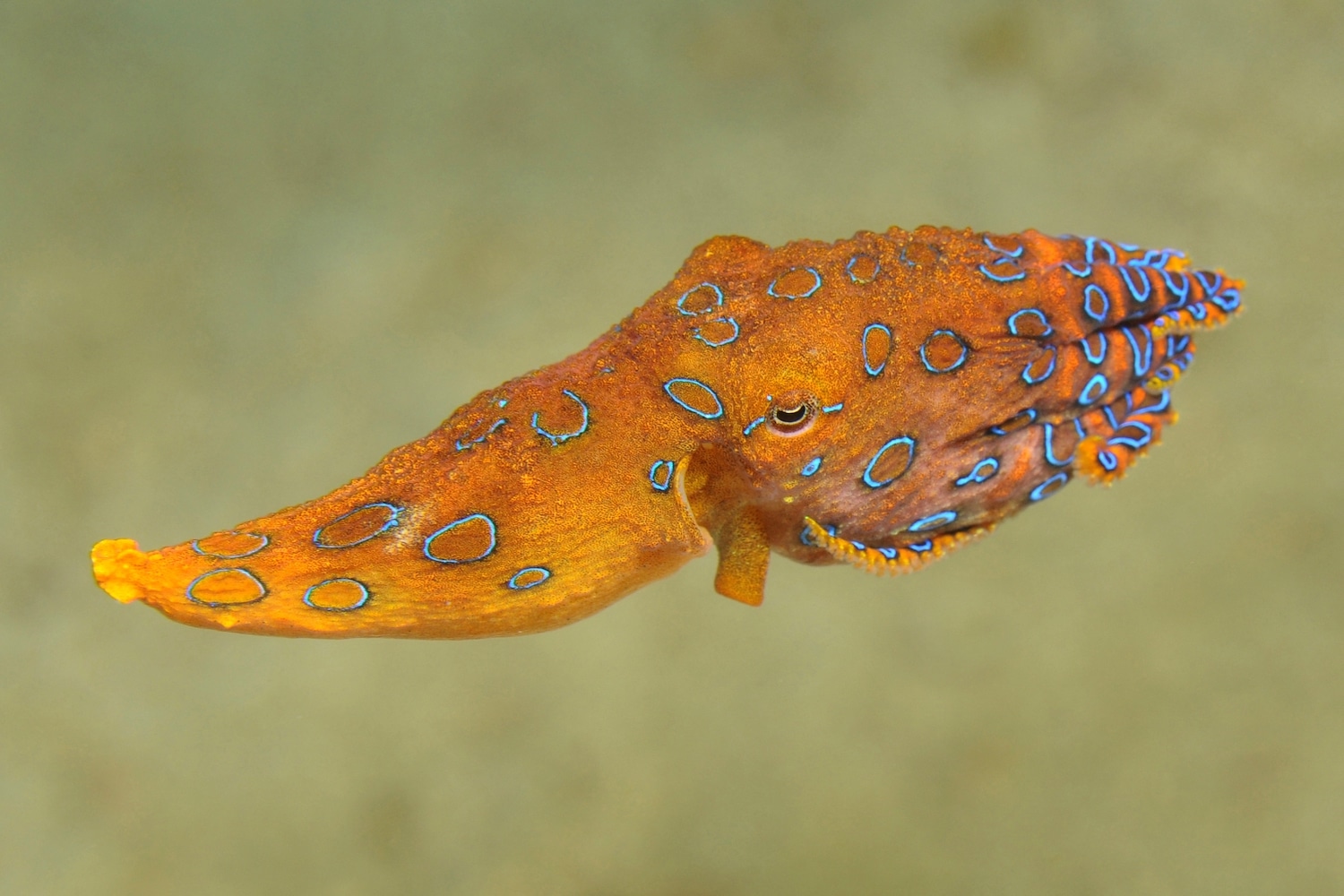
The Blue Ringed Octopus A Beautiful But Dangerous Creature Watch Video
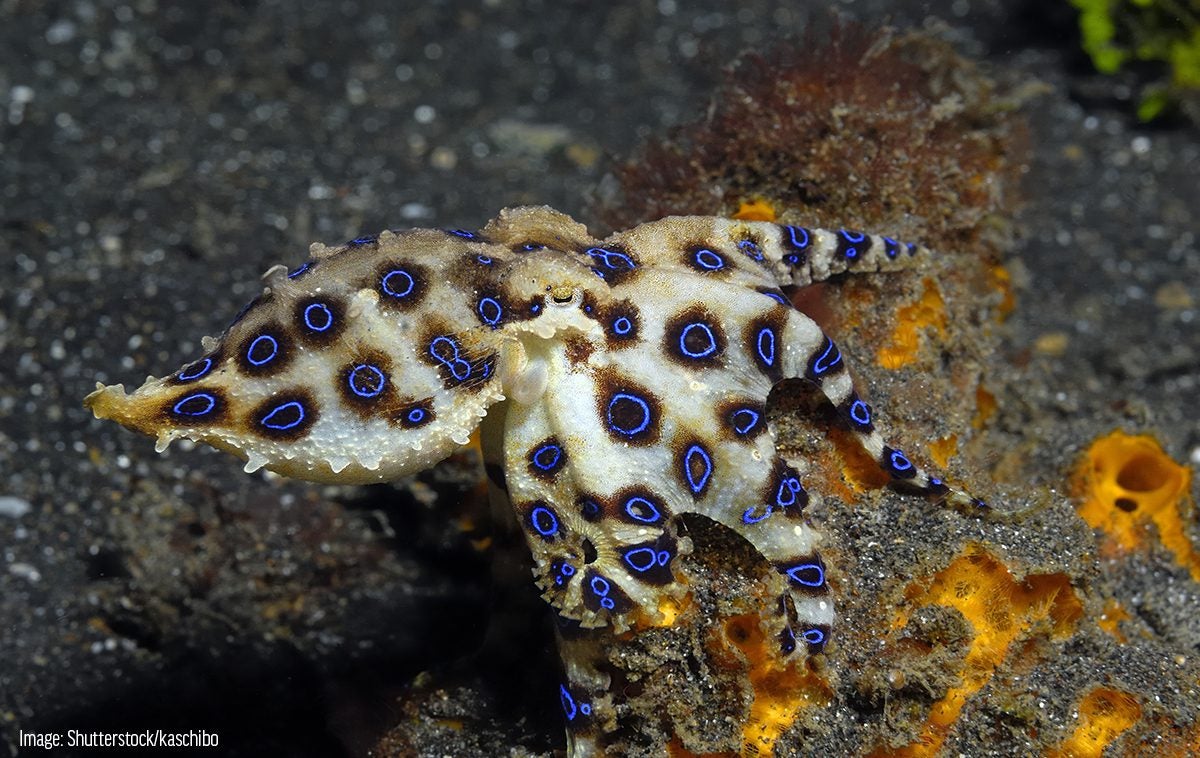
Southern Blue Ringed Octopus Oceana
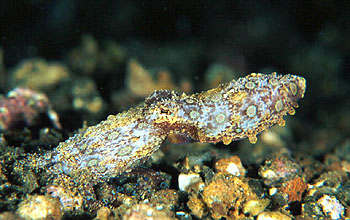
Squids Octopuses And Cuttlefish Cephalopoda

Blue Ringed Octopus Facts For Kids Dk Find Out

Blue Ringed Octopus Fishing Tasmania
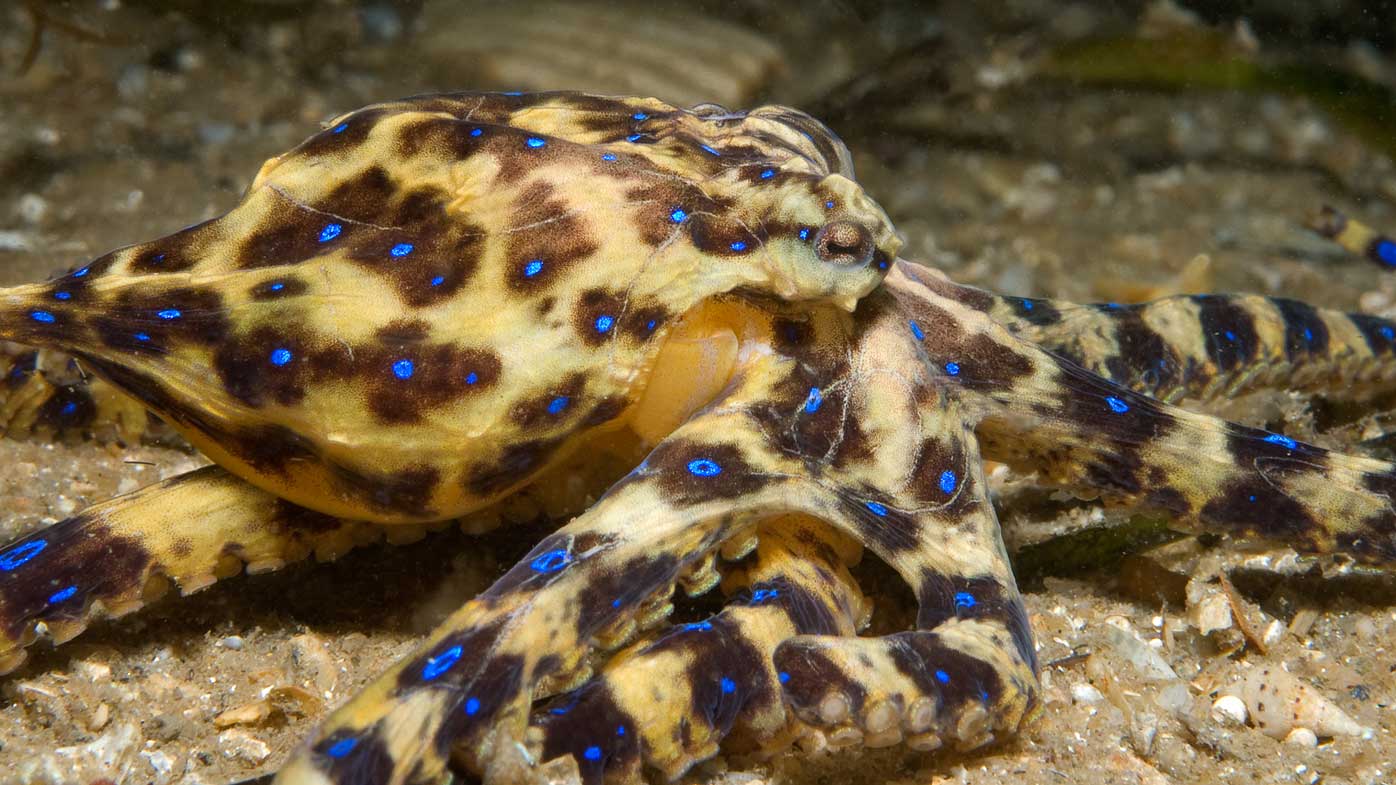
Blue Ringed Octopuses The Deadly Creature Potentially On Every Australian Beach

Blue Ringed Octopus Animal Facts Az Animals

Deadly Blue Ringed Octopus Encounter And Warning South Coast Register Nowra Nsw
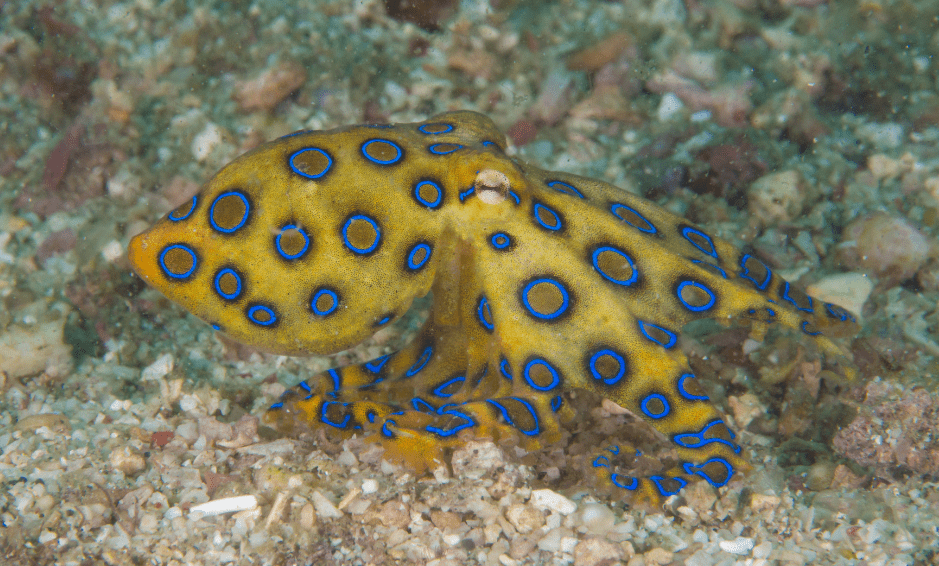
Blue Ringed Octopus Animal Corner

T9dmytsjruw2 M

Thai Street Market Sells Highly Toxic Grilled Octopus
A Blue Ringed Octopus Bite Is Rare But Potentially Deadly Here S What You Need To Know Abc News
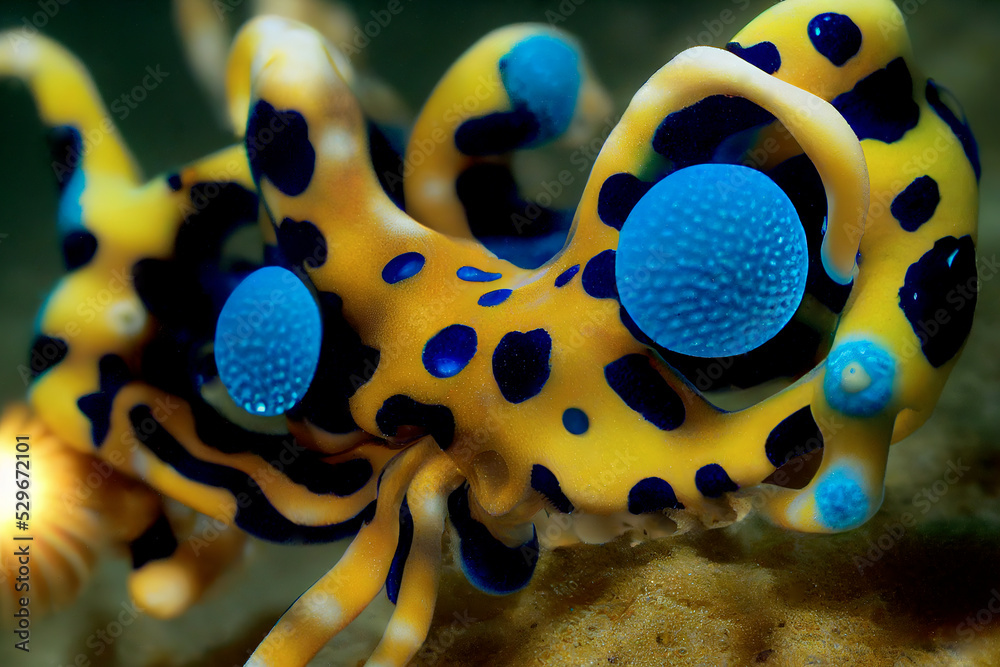
Blue Ringed Octopus The Deadly Blue Ringed Octopus Hapalochlaena Beautiful Underwater Background Stock Illustration Adobe Stock

Blue Ringed Octopus Magnet Gift For Octopus Lovers Cute Ocean Etsy De